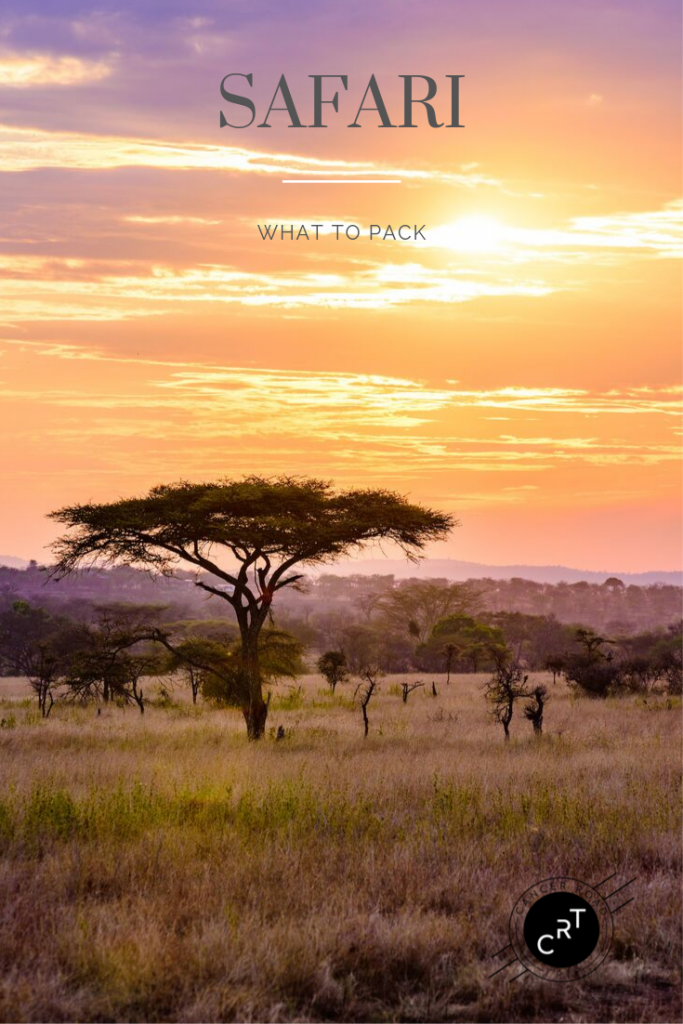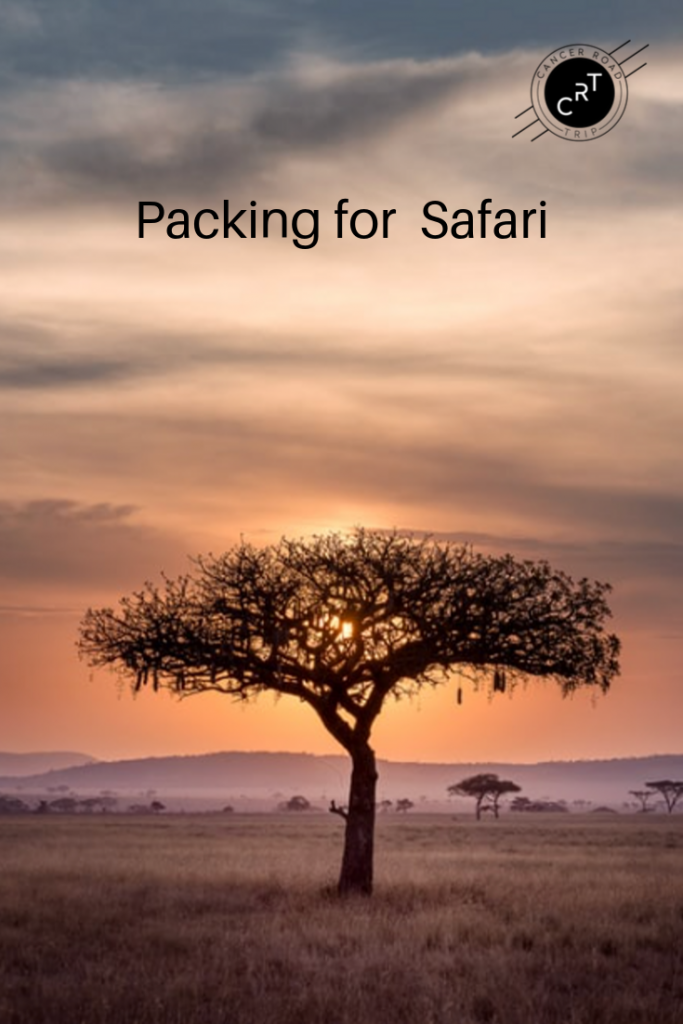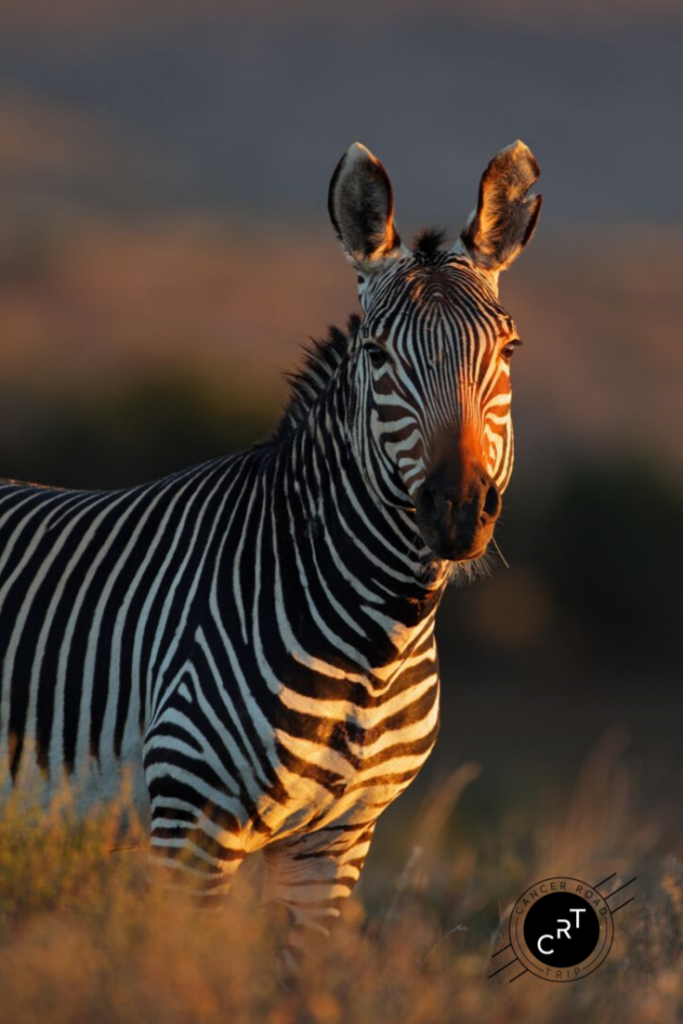
by Pat Wetzel | Sep 26, 2019 | Preparation, Road Trip, The Story
I am hardly a fashionista under the most ordinary of circumstances and on safari my focus is on practical safari clothes that will protect me from the sun and bugs; is fast and easy to launder; and comfortable.
Because most of this trip is in higher terrain, it should be a bit drier and cooler than the coastal areas like Zanzibar. And early morning game drives will most likely mean a jacket and/or sweater.
Here’s the safari clothes and personal items packing list I came up with. I’ll add some editorial notes after I return:
Documents
- Passport
- Vaccination Card
(I usually keep a digital copy of both on my phone and in my email)
First Aid and Medications for Safari
- Hydrocortisone Gel for Bug Bites
- Pepto-Bismal Pills
- Gaviscon (Antacids)
- Ciprofoxacin (Diarrhea))
- Atovaquone-Proguanil (Malaria)
- Bug Spray with DEET
- Natural bug spray without DEET (I’m hoping this will work rather than the product with DEET)
- Sunscreen/Moisturizer
- Neosporin
- Tea Tree Oil
- Band Aids
- Aspirin
- Claritin D
The CDC (CDC.gov) also provides a medical packing list that is more extensive and covers just about anything you might need.
Safari Clothes
Safari clothes for me means protecting my skin from sun and bites. I had contemplated just wearing my hiking shoes, but instead I opted 
 for a pair of North Face boots. Between the higher boots and full length slacks, I leave less skin exposed. Given that I react very poorly to bug bites, this was a serious consideration for me.
for a pair of North Face boots. Between the higher boots and full length slacks, I leave less skin exposed. Given that I react very poorly to bug bites, this was a serious consideration for me.
The boots have been broken in, tested with different sock thicknesses and they are incredibly comfortable. This winter, they’ll be a great around and about casual boot in New Mexico.
I live in black, white and gray, so I did need to pick up some safari clothes. Dark colors, bright colors, metallic fabric and the color blue are said to attract Tsetse flies. Their bites are notorious for spreading disease and causing a host of ailments. I think I’ll leave my black shirts behind!
For safari clothes, I bought a sun shirt by Coolibar; and added 2 more safari shirts from REI. I also picked up a pair of kaki pants by Kuhl. I love their outdoor clothes and the pants have a drawstring at the ankle for a snug, no-bug fit. Along with my beloved pants from Athleta (in green and gray), I should be set.
For toppers, I am bringing my Orvis travel jacket in bone; an olive green travel vest (also from Orvis); and 2 layers for warmth, one a lightweight zip jacket, the other a heavier fleece pullover.
Plus of course my hiking hat.
I am planning on simply rinsing some of my safari clothes and letting them drip dry overnight so I don’t have to pack too much. Same for underwear.
And this is a trip with just four people (all of whom are professional photographers, except of course, yours truly). No need to dress for the evening! (Hopefully we’ll be shooting photos or immersed in post production!)
All this translates into the following packing list for safari:
Safari Clothes and Personal Items
Shoes:
- Boots (Wear on plane)
- 1 Pair sandals
Underwear, Night Wear and Toiletries
- 3 Pair Smartwool Hiking Socks plus one heavier pair of REI hiking socks
- Underwear
- Bathing Suit
- Sleeping shirt
- Toiletries
Pants and Tops
- 4 Pair Lightweight Long Pants (one of which I’ll wear on the plane)
- 4 Lightweight sleeveless tops to be worn alone or under a long sleeve safari or sun shirt
- 4 Long Sleeve Shirts: 3 Safari Shirts and 1 Sun Shirt
Jackets/Sweaters
- Travel Jacket (wear on plane)
- Travel Vest (wear on plane)
- 2 Fleece Jackets (a lightweight zip up jacket and warmer weight pullover)
Miscellaneous
- Scarves: I have these circular neck scarves that are perfect for protecting your face and neck from dust or debris. They take up no room and are handy for a number of things. I’ll bring along a few, just to be safe, and I’ll wear a regular scarf on the plane. It might come in handy. And it’s not a favorite. If it gets hopelessly dirty or lost, it’s ok.
- Duct Tape: Never leave home without it!
- Hat: an easy way to keep the sun off one’s face.
The Final Packing Ensemble
The final packing ensemble consists of one carry on; one backpack with photo equipment on a “wheely” for easy transport throughout the airport; and one duffle bag (to be checked).
Carryon
- Malarone and any other important medications
- Computer charging cord and other tech hookups; mouse
- Phone and ear buds
- Fully charged chargers for phone (With an eight hour trip from Amsterdam to Kilimanjaro, I want to be sure to have access to my phone for entertainment/reading)
- Foldable toothbrush and toothpaste (nothing makes me feel better than freshly brushed teeth!)
- Passport/Innoculation Records/ Visa/ Credit Cards/ Cash/ Drivers License/ Printed Itinerary
- Change of clothes – clean shirt and underwear in case of delays
Backpack
My MindShift Backpack carries all my critical photo equipment plus my 15 inch MacBook Pro. The entire backpack goes on a wheeled cart for easy transport through airports. For a detailed look at my photo equipment, click here.
Duffle Bag
All my clothes, miscellaneous camera items, empty bean bag, rain jackets (for the cameras), Wimberly Gimbal, a tripod, monopod and a video head are in this bag. It’s pretty full, but that’s fine. I do have an extra bag that will allow me to rearrange things once I’m in Tanzania, to separate the photographic must haves from my personal items. This will allow me to easily transport any additional photo equipment to and from our daily transport into the bush.
Packing Hints
- Use Packing Cubes. They keep everything organized and make moving things around as simple as grabbing a cube.
- Keep everything else organized in some sort of bag or container.
- Together this makes packing and unpacking so simple. And you’ll never have trouble locating anything.
Final Safari To Do List
- Check with Bank (for ATM access)
- Check International Phone Access (I found out that AT&T has zero coverage in Tanzania. Oh well!) and Credit Card Companies. Be sure to use cards with no international transaction fees.
- Get Cash (for tips and whatnot)
- Download Books/Films for Reading En Route
- Start Malarone Tablets (for malaria prevention)
Pretty simple! And I think I have everything covered. As long as I have my cameras (which I’m carrying with me), I’m a happy camper.
And besides, I have zero room left in my duffle. I cannot add a single thing.
I don’t know how much internet access I’ll have en route, but I’ll try to post some things to Instagram and maybe Twitter. Stay tuned for full photo galleries when I get back.
And some good tales to tell! Because isn’t that what travel is all about?
More Reading On My Africa Photo Safari
Visas And Vaccinations For Tanzania
An African Photo Safari: Photo Equipment Packing List
An African Safari With A Nikon Ambassador
Like This Post? Pin It!
If you’re interested in learning more about photography (or cooking or film or any number of topics) check out MasterClass All-Access Pass for on-line excellence:

[et_bloom_inline optin_id=”optin_10″]
What is #CancerRoadTrip and how did it come to be? Read this post to get the backstory!
Follow me on Twitter, Pinterest, Instagram, and at Anti-Cancer Club. Connect with me! I may need a place or two to stay along the way!
Follow my blog with Bloglovin
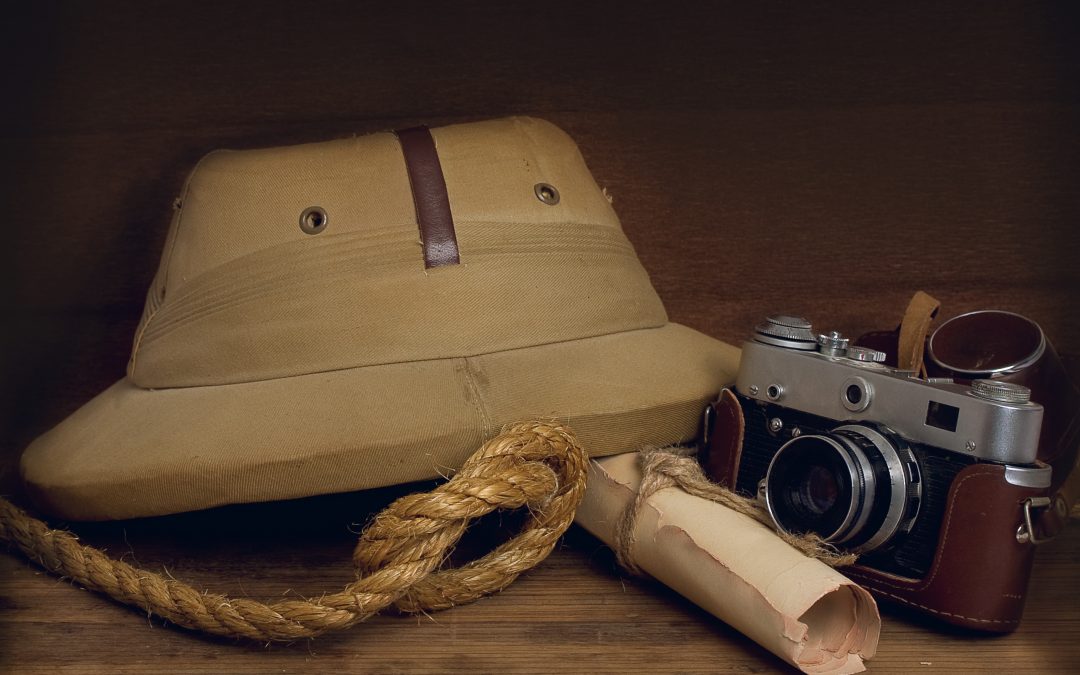
by Pat Wetzel | Sep 12, 2019 | Preparation, Road Trip, The Story
Packing for a photo safari in Africa requires a balance of comprehensiveness and minimalism. On the one hand, you don’t want to bring more than you need. On the other hand, you most likely can’t pick up anything you forget. Particularly when it comes to camera electronics.
But long before the actual packing commences, there is a bit of planning. Airfares, visas, inoculations, over the counter and prescription medications need to be arranged. Can you carry all your photo gear? Do you dare pack it? What about weight limits and carry on requirements?
This is the second of a series of posts on packing for a photo safari, looking at the photographic equipment decisions I’ve made as I get ready for this trip. There is a check list at the bottom of the post that you’re welcome to download.
The Photo Safari: Camera Decisions
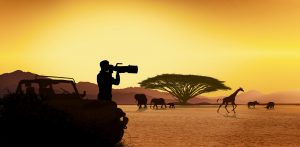
What photo gear to bring on safari?
There are many types of African safaris, in numerous locations, ranging from simple camping to ultra-luxury. This particular safari is in Tanzania, focused (no pun intended) on photography. It’s definitely on the luxury end of the spectrum.
An intense 9 day trip, with daily photo excursions and daily mentoring classes will, I hope, extend my photo knowledge considerably. Nikon Ambassador and photographer Kristi Odem will be leading the expedition. I fell involve with Kristi’s work and having met her, I think I may have found a photo mentor that will help me to evolve my skills and stretch my range.
In preparing for an African photo safari, I decided to bring a second camera body. Trying to change lenses on the go in a bumpy ride across the dusty African plain just didn’t seem like a very good idea. Too many risks: Dust in the sensor, the possibility of dropping a lens or camera body, not to mention missing a shot!
I started out with a Nikon and I’ve been pleased with their products, so a Nikon body seemed the way to go. And the new mirrorless Z series appealed to me for it’s lighter weight, compatibility with my existing lenses and the movie making capabilities.
I love my D500 (which is coming along as well), but the prospect of a lighter weight camera is immensely appealing. I may also throw my old Nikon 5500 in as an added bit of insurance. But it requires a different battery system, which means packing another set of chargers and batteries, The lithium batteries have to be carried in the backpack, not packed in the luggage.
The Two Camera Decision
When I bought my D500 last year I thought that this would be my camera for the rest of my life.
Hah!
This new Z6 is simply amazing.
There are pros and cons to using two different camera bodies. While both are Nikon, they are different. The Z6 is relatively easy to learn (at least the basics) and maneuver. It’s excellent in low light situations and I have to say, I love its light weight!
After using the Z6 for the last week, I’ve had to reacquaint myself with my D500. This has made me think hard about which body to use with which lenses. I had originally thought I’d mount the long lens on the D500 which is a more robust frame. But now I’m rethinking that.
I’ve also had to update the software in my Tamron lens to be compatible with the Nikon Z6. This took several attempts before it worked. Thanks to Tamron support, it all came together, but this is a lesson in getting things done well ahead of departure. Test everything and be sure it works.
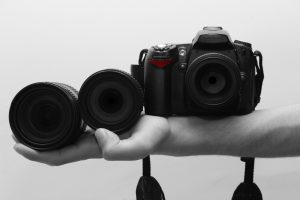
Photo Processing and Storage on Safari
While there are cell towers in the Serengeti, coverage is said to be spotty. I usually automatically back up my files to the cloud overnight (every night), but this may not be an option on safari. So a triplicate backup system (every night) will hopefully insure my photos make it back.
I have three 2T Seagate external hard drives that come with me. Overkill perhaps, but I want to be sure that I have secure options for image storage, including movie footage. I am formatting and testing each drive before I leave.
The Nikon D500 has an internal backup system in the form of a Sandisk memory card. The Z6 does not. That makes me somewhat nervous, but the truth is I’ve haven’t had a problem to date, so I have to hope that that track record continues. I’ll format and test all the cards before I leave to be sure they record without incident.
In addition, I have 2 XQD cards per camera plus the Sandisks for the Nikon D500. I can always use the latter for overflow rather than backup storage should I need to. I have to think this will be sufficient. The 64 MB XQD cards run about $130 each. A 120 GB card runs about $200 each. The cost of an African photo safari starts to add up!
Tripod, Monopod or Bean Bag?
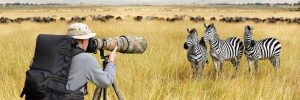
How to stabilize a camera on safari?
I have a perfect tripod/gimbal set up for my large lens. I bought a heavier tripod with a Wimberly Sidekick for The Festival of the Cranes at Bosque del Apache last year. It was exactly what I needed. Both sturdy and mobile, it allowed me to capture some great photos.
But on safari, will I be able to set up a tripod? Do I want to be able to do some filming with the Z6? Do I want to lug a heavy tripod (my lighter travel tripod cannot support the heavy, large lens and camera) around Africa?
I’ve decide to add a Manfrotto monopod, weight 4 lbs, to the packing list. This is an aluminum frame. I’d love a carbon fiber, but the cost tradeoff just isn’t worth it for this trip. I have to hope this doesn’t turn into a decision that needs upgrading later (welcome to the world of photography).
The head offers flexibility for filming; the specs say it should support my heavier equipment. It arrived this past week and it’s terrific. But I think I still want my heavier tripod for longer exposure shots, particularly with the 150-600mm Tamron lens.
 I’ve also purchased a large bean bag from The Vest Guy for stability in the vehicle. These bags rest on the side of a vehicle to provide support, particularly for large lenses. These can be purchased from The Vest Guy directly or via Amazon. Amazon Prime members benefit from free shipping. There is an additional charge for shipping if you buy it directly from The Vest Guy.
I’ve also purchased a large bean bag from The Vest Guy for stability in the vehicle. These bags rest on the side of a vehicle to provide support, particularly for large lenses. These can be purchased from The Vest Guy directly or via Amazon. Amazon Prime members benefit from free shipping. There is an additional charge for shipping if you buy it directly from The Vest Guy.
The biggest challenge will be getting the bag filled when I arrive! People use beans, rice and all sorts of fillers. I have no idea what will be available locally. But there is a local market and that may be a quest that turns up some interesting adventure!
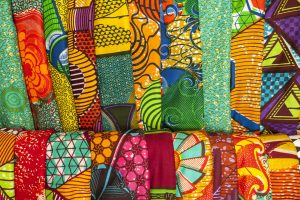
African traditional fabrics in a shop in Africa
The Photo Safari: How To Carry It All?
Transporting all this equipment also requires some thought. I have numerous camera bags at this point, but none of them accommodate the Tamron 150-600mm lens. It’s just too large.

Just love this Mindshift backpack!
 So a quest for a camera bag commenced. I’ve been looking for some time for a combination camera bag and backpack that can accommodate the Tamron lens and my computer, as well as an extra piece or two of clothing.
So a quest for a camera bag commenced. I’ve been looking for some time for a combination camera bag and backpack that can accommodate the Tamron lens and my computer, as well as an extra piece or two of clothing.
I opted for the MindShift* 26L backpack in forest green (the color is just gorgeous).
The 26L fits under an airline seat. It holds all my critical camera equipment as well as a 15 inch MacBook Pro. And it’s comfortable. I can easily shoulder a fair amount of weight.
But just to make life easy, I also bought a small cart for transit through a variety of airports over the 30 hours of flight it takes to get to Kilimanjaro.
 Delta allows me one personal item and a carryon. My personal item is a Kayla Town Square black bag that I take along for its versatility. I bought it at the very beginning of my travels and it’s one of the best purchases ever. It allows me to take a change of clothes and catch the overflow from my photo bag.
Delta allows me one personal item and a carryon. My personal item is a Kayla Town Square black bag that I take along for its versatility. I bought it at the very beginning of my travels and it’s one of the best purchases ever. It allows me to take a change of clothes and catch the overflow from my photo bag.
The carry-on is obviously my backpack.
The monopod, tripod and gimbal will go into a duffle bag, as will the bean bag and rain jackets. I have to pray that they will arrive safely. Amsterdam (the European stop en route to Africa) and I have a very mixed history when it comes to luggage.
For luggage, I ordered two inexpensive bags from Amazon. One will handle the photo spillover and all my travel needs. The other is intended for a daily bag to haul extra items (a filled bean bag, tripod, gimbal) to the vehicles. The bags fold flat to consolidate things for transport home.

Two of these bags in Forest Green will be perfect. One will be packed and checked, with the other one folded up inside. In Africa, I’ll be able to use the second bag for tripods, monopods and anything else that needs to be hauled.

The Photo Safari: Packing List
More experienced photographers will undoubtedly have a more sophisticated equipment list. I’ve been taking photos for almost two years now, so I’m still a newbie. Here is my photography packing list (which I’ll review after the trip). You can just capture this via screen shot if you’d like to use it as a guide for your own photo needs.
Cameras and Camera Gear
Lenses, Filters and Cleaning Gear
- Nikon 28-300mm
- Nikon 10-24mm
- Tamron 150-600mm
- UV Filters- I keep a UV filter on my lens to protect against scratches and dirt. Along with a hood, this has saved me numerous times.
- Neutral Density Filter
- Cleaning Gear (Wipes, Blower, Brush, Spray)
- Reverse Graduated Filter
- Polarizer for 77mm lens (I’ve had so-so experience with polarizers. With the ability to do so much in post, I’ve decided to pass on a polarizer for the large lens (another $150-200 or so!)
- Rain Jacket (for the cameras-2)
Memory, Electronics and Backup
- 3 Seagate Backup Drives, Formatted and Tested
- 3 EN-EL Batteries for Each Camera (6 Total); Battery Chargers (sufficient to charge 4 Batteries at a time). Along with Nikon batteries, I also purchased 2 Green Extreme Batteries with a charger. They’re also an EN-EL15 battery that got excellent reviews and are a bit more reasonable than the Nikon batteries.
- Computer Charger, Portable Keyboard and Mouse
- Extra AA Batteries
- Lightening Plug In Adapters for USB ports and QXD Card Reader
- USB Power Strips (2) for 120-240 volts
- Adapters-British/African Style (2)
- Map of Tanzania
“A map says to you.
Read me carefully, follow me closely, doubt me not…
I am the earth in the palm of your hand.”
― Beryl Markham
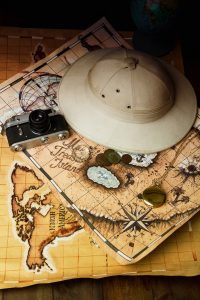
No cell, no problem. A good old fashioned map comes to the rescue
What did I forget?
I’m sure I’ll find out! See you in Africa! But first, next week to #TBEX in Montana (with, hopefully some great photos of that beautiful state) and then to San Diego for a TV interview with KUSI on CancerRoadTrip. For all of you who have lent your good thoughts and encouragement, thank you so much. I hope this is starting to all pay off.
More On Travel And Travel To Africa
Visas and Vaccinations for Tanzania
Safari Clothes: Packing for Safari
Travel Packing List: Quotes, Wisdom and A Minimum of Luggage
An African Safari With A Nikon Ambassador
Like This Post? Pin It!

If you’re interested in learning more about photography (or cooking or film or any number of topics) check out MasterClass All-Access Pass for on-line excellence:

[et_bloom_inline optin_id=”optin_10″]
What is #CancerRoadTrip and how did it come to be? Read this post to get the backstory!
Follow me on Twitter, Pinterest, Instagram, and at Anti-Cancer Club. Connect with me! I may need a place or two to stay along the way!
Follow my blog with Bloglovin

for a pair of North Face boots. Between the higher boots and full length slacks, I leave less skin exposed. Given that I react very poorly to bug bites, this was a serious consideration for me.
